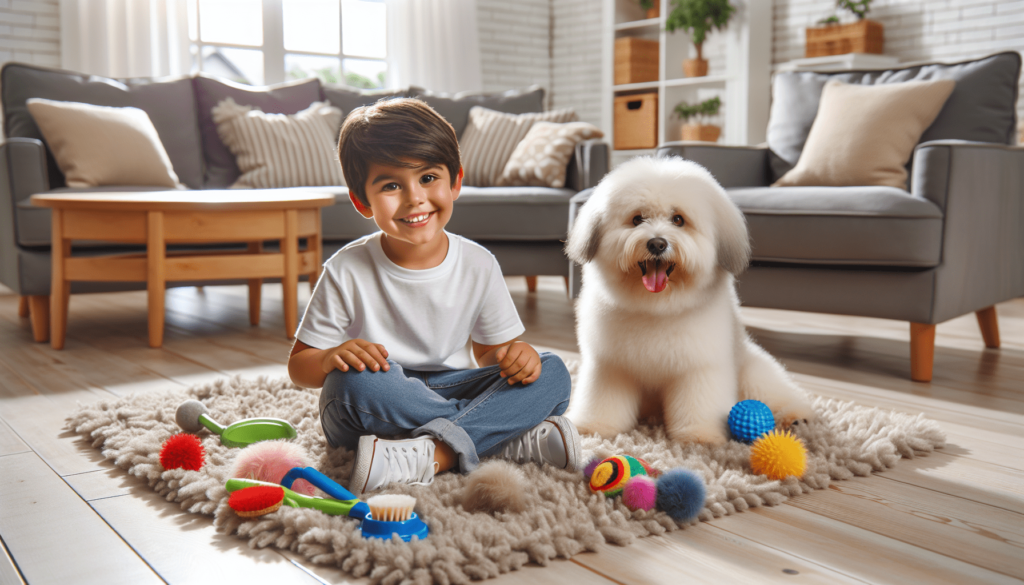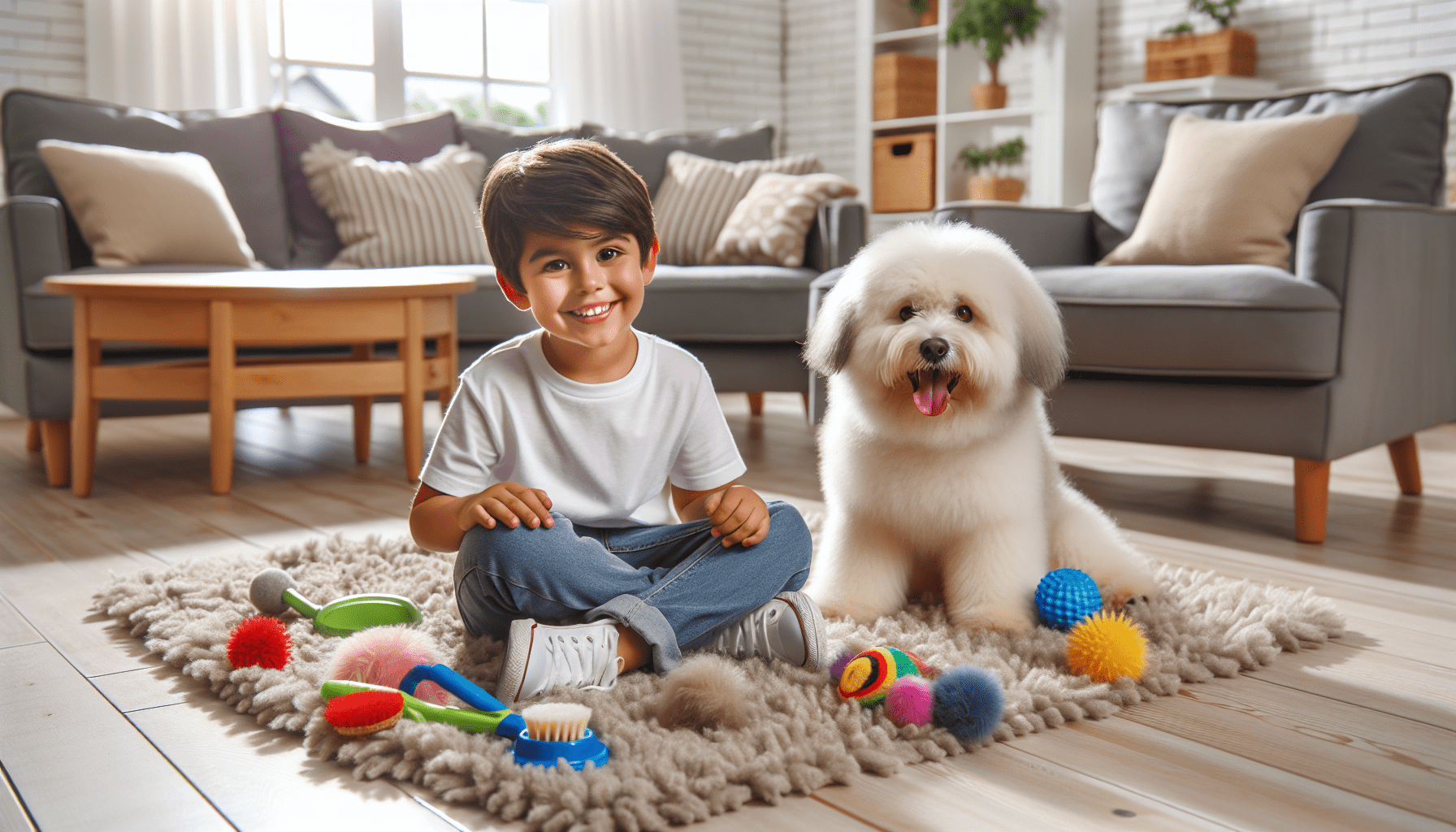5 Tips to Protect Your Child from Pet Allergies” offers practical and compassionate advice to help you create a safe and comfortable home for both your child and beloved pets. With these five thoughtful strategies, you’ll find ways to balance the joys of pet ownership with the necessity of allergy management, ensuring your little one can enjoy the companionship of animals without suffering from allergy symptoms. Dive into the article to discover manageable tips that range from regular cleaning routines to consulting with healthcare providers, all aimed at fostering a harmonious living environment. Have you ever wondered how you can protect your child from pet allergies while still enjoying the companionship of a furry friend? Many parents face this dilemma, wanting their child to experience the joy of having a pet but also being concerned about the possibility of allergies. If this sounds familiar, don’t worry—you’re not alone.
In this friendly guide, we’ll explore five essential tips to protect your child from pet allergies. This comprehensive approach will help you balance the joy of pet ownership with your child’s health needs.

Understanding Pet Allergies
First, it’s important to understand what pet allergies are and how they affect children. Pet allergies are reactions caused by the immune system’s response to proteins found in an animal’s skin cells, urine, or saliva. Common symptoms include sneezing, runny nose, itchy eyes, and even asthma in more severe cases.
What Causes Pet Allergies?
Pet allergens are the tiny, often invisible proteins in pet dander, saliva, and urine that can trigger allergic reactions. Dander, composed of tiny flakes of skin shed by animals, is a common culprit.
Common Sources of Pet Allergens:
| Source | Description |
|---|---|
| Dander | Microscopic skin flakes shed by animals |
| Saliva | Proteins in animal saliva that linger on fur and skin |
| Urine | Proteins present in animal urine that become airborne |
Understanding what causes pet allergies is the first step to managing them effectively.
Tip #1: Select Allergist-Friendly Pets
The type of pet you choose can significantly influence your child’s allergic reactions. While no pet is truly hypoallergenic, some are better suited for families with allergies.
Best Pets for Allergy-Prone Kids
Certain pets produce fewer allergens compared to others. If your child is prone to allergies, consider these options:
Allergy-Friendly Pet Options:
| Pet Type | Reason |
|---|---|
| Fish | No fur or dander, minimal allergy risk |
| Reptiles | Lack fur, hence minimal dander production |
| Birds | Although they have feathers, they produce fewer allergens compared to fur |
| Certain Dog Breeds | Breeds like Poodles or Bichon Frises are known for lower dander |
| Cats | Sphynx cats, with their minimal hair, produce fewer allergens |
Choosing the right pet can help minimize allergy risks, ensuring your child can enjoy their company without constant allergy woes.
Tip #2: Creating an Allergy-Free Zone
Creating an allergy-free zone in your home helps to reduce allergen exposure. This is especially important in areas where your child spends a lot of time, such as their bedroom.
How to Set Up an Allergy-Free Zone
To create a safe space, follow these simple steps:
- Keep Pets Out: Ensure that pets do not enter your child’s bedroom. Use air purifiers to reduce airborne allergens.
- Wash Bedding Regularly: Clean sheets, pillowcases, and other bedding weekly in hot water.
- Clean Floors: Use a vacuum with a HEPA filter to remove dander from carpets and rugs. Consider replacing carpets with hardwood or tile floors.
- Control Humidity: Maintain indoor humidity levels below 50% to reduce the growth of allergens like mold and dust mites.
By setting up an allergy-free zone, you provide a safe haven for your child to breathe easy and reduce allergy symptoms.
Tip #3: Maintain a Clean Environment
Keeping your home clean is crucial in reducing allergens. Regular cleaning helps to minimize the accumulation of pet dander and other allergens.
Cleaning Tips to Reduce Pet Allergens
Here are some effective ways to maintain a clean and allergy-free home:
- Regular Vacuuming: Use a vacuum with a HEPA filter at least twice a week to capture pet dander and other allergens.
- Dusting: Dust surfaces with a damp cloth to prevent allergens from becoming airborne.
- Washing Pet Bedding: Wash your pet’s bedding and toys frequently in hot water.
- Grooming Your Pet: Regular grooming reduces the amount of dander your pet sheds. Consider a professional groomer if possible.
- Air Purifiers: Use air purifiers with HEPA filters in common areas to remove airborne pet dander.
Maintaining a clean environment can significantly reduce the amount of allergens your child is exposed to daily.
Tip #4: Regular Health Check-ups
Regular medical check-ups are essential for monitoring your child’s allergies and overall health. This ensures that any issues are identified and treated early.
Importance of Allergy Testing
Allergy testing can pinpoint specific allergens affecting your child, enabling you to take targeted actions. Consider consulting an allergist to conduct the following tests:
- Skin Prick Test: Identifies specific allergens by observing skin reactions to small amounts of potential allergens.
- Blood Test: Measures the levels of allergy-causing antibodies in the blood.
Medical Management of Allergies
Your child’s doctor may also recommend medications to manage allergy symptoms, such as:
- Antihistamines: Alleviate symptoms like sneezing, itching, and runny nose.
- Nasal Sprays: Reduce nasal inflammation.
- Allergy Shots (Immunotherapy): Gradually desensitize your child’s immune response to allergens.
Regular check-ups and appropriate medical management can help keep allergy symptoms under control, enhancing your child’s quality of life.
Tip #5: Educating Your Child and Family
Education plays a crucial role in managing pet allergies. Ensuring that all family members understand how to minimize allergens can lead to a happier, healthier home.
Teaching Your Child About Allergies
Help your child understand their allergies and the steps they can take to reduce exposure:
- Hand-Washing: Encourage regular hand-washing, especially after interacting with pets.
- Avoiding Face Touching: Teach your child to avoid touching their face after petting an animal.
- Sharing Responsibilities: Involve your child in tasks like vacuuming and dusting to keep allergens under control.
Family Roles in Allergy Management
Each family member can help minimize allergens. Discuss and assign roles to ensure everyone contributes:
- Pet Grooming: Assign the task of pet grooming to older children or adults to minimize dander.
- House Cleaning: Share household cleaning duties to ensure a consistent allergy-reducing routine.
By educating your child and family, you foster a collaborative environment where everyone works together to reduce allergens.
Conclusion
Balancing pet ownership with allergy management may seem challenging, but it is achievable with the right strategies. By selecting allergist-friendly pets, creating allergy-free zones, maintaining a clean environment, ensuring regular health check-ups, and educating your family, you can protect your child from pet allergies while still enjoying the companionship of a furry friend.
Remember, the key to managing pet allergies lies in a proactive and consistent approach. Implement these tips, and your family will thrive in a happy, healthy, and allergy-conscious home.
If you have any questions or need further guidance, don’t hesitate to reach out to a healthcare provider or an allergist. They can offer personalized advice tailored to your child’s specific needs. Here’s to a joyful and allergy-free experience with your beloved pet!
